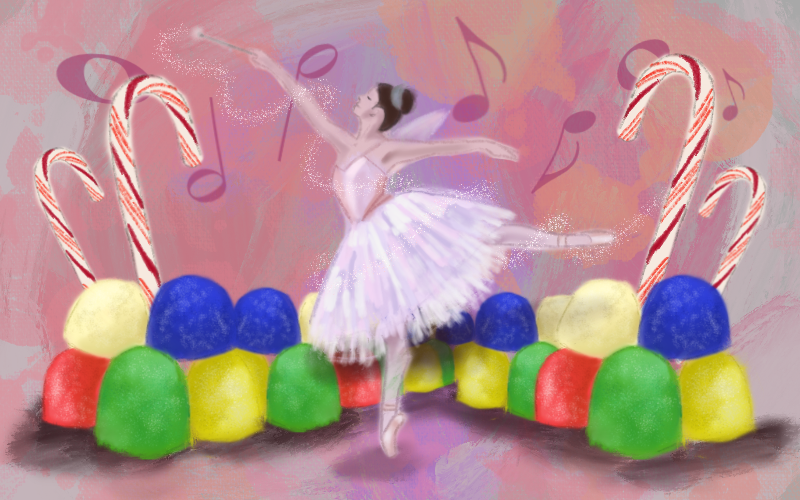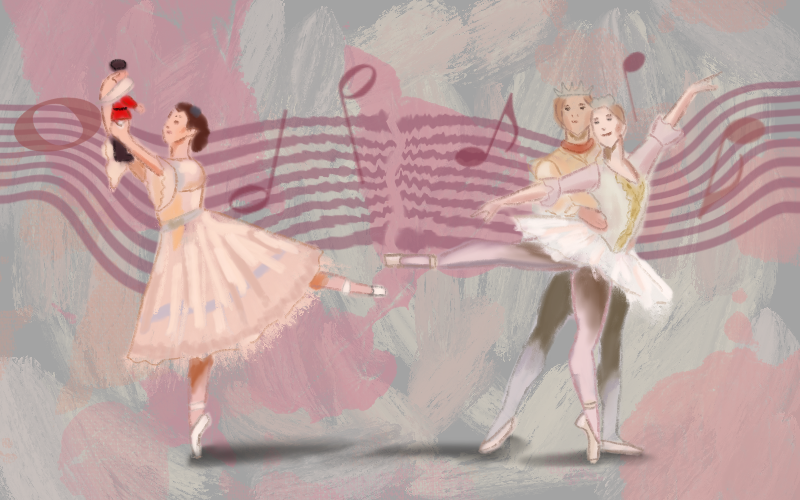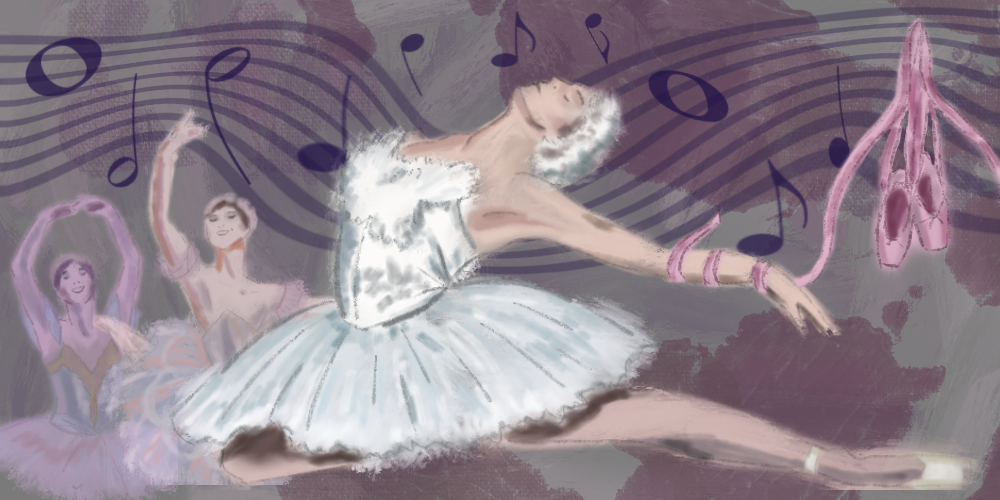Human beings are incredibly odd creatures. Forget the whole “debating the nature of existence” thing. We’re the only animal on the planet that chooses to weld metal rods into the teeth of our own offspring in order to fix an evolutionary issue. Our species, at some point in the past, somehow managed to invent the concept of boredom despite the infinite wonder of the world and cosmos all around us, and we’re the only animal that uses melody to put forth our very deepest emotion and tragedy out into the world. We’re also, unsurprisingly, the only animal on the planet that lives on half-truths. Every other creature thrives on three basic, fully-realized ideas: First, they probably need to eat and not be eaten by something bigger than themselves, so long as the situation allows it. Second, they probably need to sleep when the giant flaming ball of gas in the sky can no longer be seen. Third, they probably need to mate — and desire to do so — with the details actively avoided.
People do all of these things, of course, but we also manage to live by and love concepts and objects entirely invented by our own oddly intuitive minds while only knowing half of their story. For example, every functional human being has of course memorized the famous opening sequence of 1931’s Dracula, though today it’s much more difficult to nail down someone who can actually name the song over which the scene is shot. This is odd, as the song, “Swan Lake,” is still frequently used in modern media, with names such as Westworld and The Blacklist immediately coming to any cultured, non-obsessed mind. It was composed in 1875 by Russia’s first ever internationally renowned composer, Pyotr Tchaikovsky, a figure most well-known for his role in that wonderful thing called “ballet.” To those who know his name, a few of his works will be instantly recognizable: Swan Lake, a story of impossible romance that, as all sane love stories do, ends with the self-inflicted death of its main characters Siegfried and Odette. Very tragic. Sleeping Beauty, the story of a young woman cursed by things entirely out of her control, as all young women must face at some point in their lives, to sleep for a hundred years until true love’s kiss breaks the spell. Again, very tragic. The Nutcracker, possibly the most popular ballet of all time, in which a toy prince saves young Clara from the evil clutches of the great Mouse King, only to spirit her away into the Land of Sweets where they bear witness to a collage of dancing candies from the world over. Possibly the most tragic of them all.
This sounds odd, especially when The Nutcracker is widely considered to be his least profound work. There are no scenes of tragic love, of two hearts making the ultimate choice to be united forever in death. There are no diabolical curses, cast upon an unborn child for sin committed by her mother and father. There is normal love, and there is a normal curse, or at least however normal of a curse there can be, but nothing so profound that it could make up the entirety of the ballet on its own. So why call it tragic? While E.T.A. Hoffman’s original “The Nutcracker and the Mouse King,” which the ballet was based upon, was definitely dark with its vivid descriptions of mice and toys being ripped apart seam-by-sinew, the ballet takes an opposite stance. From its much more upbeat score to its titular characters of Clara and the Nutcracker Prince, Drosselmeyer and the Mouse King, and of course the Sugarplum Fairy, most people would be hard struck to find any reason as to how a description of the piece could in at all involve the word “tragic.”
Well, here’s a fun fact: The Sugarplum Fairy almost didn’t exist. She wasn’t in Hoffman’s original tale, because with scenes like the one described above how could she be, and the ballet, in all of its popularity, almost went unfinished. This is an odd thing to consider, as she exemplifies nearly everything that the ballet is known for and, to a large extent, what critics normally aim at. She is grace personified, she is beauty made real, and she is the ultimate protector of the Land of Sweets, a guardian angel in a land devised entirely for the minds of children. Yet, she nearly didn’t exist, and it is only due to the very opposite of these things, due to profound tragedy and heartbreak and the ultimate sadness of the human being that she came around at all, at least in the form she takes on today. The Nutcracker was, after all, only completed due to the presence of tragedy, and therein lies the true profundity of the ballet. But, considering it tends to be difficult to explain these kinds of things without background, it would probably be wise to explain exactly why the Sugarplum Fairy almost didn’t exist, and why, today, she does.

The Nutcracker was a response to the sweeping success of Tchaikovsky’s previous ballet, Sleeping Beauty. The current tsar of Russia, as tsars usually are, was hungry for more from his subjects. Accordingly, Director of the Imperial Theatres Ivan Vsevolozhsky once more threw together the iconic duo of Tchaikovsky and Marius Petipa, both of them being the masterminds behind Sleeping Beauty, for what was to be a sort of holiday special. Petipa, as he usually did, took charge of the storyboarding, and in no time at all had created the two incredibly famous Acts I and II of what was to be The Nutcracker. Tchaikovsky, upon taking one look at the document, was appalled. Here was to be found no substance beyond simple childhood glee, no profound tragedy or lovers needlessly throwing themselves to their deaths over a problem that could have been solved 100 other ways. It was nothing but a children’s storybook, through and through. He might have refused it, in the end, if it hadn’t been an imperial commission, and even then, if his own personal issues weren’t nearly as prevalent as they were. But they were; Tchaikovsky is known to have had incredibly depressive tendencies, and the constant spewing of his critics combined with the fact that he had been entirely alone since the failure of his marriage with a certain Antonina Miliukova in 1877, a failure brought about by his own homosexuality, meant that his reputation was one of the very few things that he held dear. This, of course, being offset slightly by the presence of his brother, Modest, and his sister, Aleksandra, the only family members he had left, as well as the only two people he truly cared about anymore.
So, like all intelligent men, he decided to half-avoid his problems by touring Europe in 1891 in anticipation of an upcoming American tour. At this point, the ballet was about halfway completed. Act I had been mainly finished at this, as had the beginning of Act II, but no matter what he did Tchaikovsky couldn’t bring himself to write the remainder of the work without it sounding wretched and lifeless. He was, in his own words, “having a sort of crisis,” not being able to bring himself to compose for such a lifeless script, yet not being able to deny the direct wishes of the tsar. His solution to this was, of course, to travel to Rouen in France a few weeks before the beginning of the tour, where he immediately locked himself away in a hotel room for ten days straight. Rarely does loneliness help itself, and this experience only further drove him into depression. He finally emerged when it was time to leave for America, and with nothing to show for his ten days of self-imposed exile, he was deep in a personal crisis. What really broke him, though, was not the exile, nor the threat of an oncoming deadline that he was nowhere near making, but a newspaper he read before a pre-tour concert he was holding in Paris.
“Aleksandra Tchaikovskaya dead.” The fact that it was front-page news probably didn’t help, but it doesn’t come even close to explaining how much it truly affected Tchaikovsky, either. The death of his sister, a thing brought about by an internal sickness, broke him beyond measure. Immediately, he wrote the following letter to his brother:
Modi, yesterday I went to Paris. There I visited the reading-room in the Passage de l’Opéra, took up the Novoe Vremya and read the announcement of Sasha’s death. I started up as though a snake had stung me . . . I must go to America. Mentally I am suffering much . . . To-day, even more than yesterday, I feel the absolute impossibility of depicting in music the ‘Sugar-plum Fairy.
As the modern-day normally shows when speaking on the subject of history, he would figure out this depiction in a fairly spot-on matter later, but for now, his heart was much too heavy. As surprising as it is, composers are in fact human, despite their unnatural talents and control over the mind, and humans are very easy creatures to break. It’s like pushing on a flower stem, doubly so if we’re already slightly broken, and at this point, Tchaikovsky’s mind was probably somewhere in between wanting to uphold his reputation and completely breaking down. So, on he went to America, hoping to relieve his mind from the current weight of the world it was carrying. Upon his return, Vsevolozhsky extended The Nutcracker’s deadline, so long as the composer would actually see it done.
There’s the background, tragic and true. But what about the tragedy inherent to The Nutcracker itself? Well, that brings up another odd thing about humanity; We’re incredibly good at turning tragedy into great works of art, and this is something Tchaikovsky himself was all too familiar with. His opera Eugene Onegin, for example, was inspired by his previously mentioned divorce of his, and after Aleksandra’s death, The Nutcracker would follow that very same style. Now, rather than despising the work before him, Tchaikovsky found solace in it. In Clara and her family, in the great godfather Drosselmeyer, and in the Nutcracker Prince, he saw not childhood wishes but an image of his own life reflected before him. He saw his sister and their time together as both children and adults, and the whole score was reshaped around his memories of their final Christmas together in 1890. In the Sugarplum Fairy and the Land of Sweets he saw that innocence reflected, the hopes and dreams of his sister brought to life, before she had grown sick, and long before her death. In the final scene of the production, when Clara awakes from her dream and sees the world for what it really is, he saw himself, his own hopes and dreams dashed by the dark reality of life, before the days took their toll.
This is seen even in the acts themselves. Clara and the Sugarplum Fairy, after all, are nothing but reflections of one another dancing to different tones. Clara, in Act I, dances with the Nutcracker to a melody upbeat and rising, while the Sugarplum Fairy dances in Act II with Hans Peter, the Nutcracker’s curse-ridden self, to a melody soft and falling, the complete opposite of Clara’s. It is a statement of childhood’s loss, a manifestation of Aleksandra, whom Tchaikovsky saw in Clara, growing into her beauty and away from the childhood where their memories were kept. Truly, The Nutcracker was his one and only lament. This is the reason it’s score manages to be so emotionally charged despite the absence of any obvious meaning to sustain it. “Dance of the Sugarplum Fairy” in performance is just as the song’s title dictates, yet within its gentle movements lies a phantom reminder of Aleksandra’s grace and beauty as reminisced by Tchaikovsky’s broken heart. “Waltz of the Snowflakes” similarly contains within it memories of the final Christmas between a brother and sister, free from sickness and hardship, and “Pas de Deux,” the greatest of them all, is a musical manifestation of Tchaikovsky’s grief, it’s sharp rising and falling tones serving to echo the weeping of his soul following the death of his beloved Aleksandra.

With these thoughts in mind, let’s come back to the Sugarplum Fairy. It was earlier mentioned that she nearly didn’t exist, and the question was posed as to how. If I’ve done my job correctly, which I’m rooting for, this question should have been answered, replaced by a realization concerning the profundity that she does exist. Despite all of the odds stacked against her, despite the sweeping tragedy that overtook Tchaikovsky’s heart in her creation, and despite the ardent criticism of her character upon the ballet’s release, the Sugarplum Fairy managed to waltz her way through every hardship thrown at her and come out all the stronger for it. One would be wrong to say that her representation as a child’s perfected vision of beauty and innocence incorrectly interprets her character, but so too would one be wrong to say that this represents the entirety of her purpose. She is innocent, but so too is childhood and the memories we cast back upon it. She is beautiful, but so too is the effect tragedy has on a human heart. She is a perfected reflection of Clara, but so too must we all strive to achieve a perfected vision of ourselves, less we have no reason to strive. She is the ultimate representation of the profound side of tragedy which Tchaikovsky knew so well in his, a crystallization of the concept that even when we wake from our greatest dreams to face the cruelest aspects of the world, someone, or something, will always be there to hold our hand, to remind us that dark things happen and that the good things shine all the better for it.
His other works may have been more profound in appearance, but no other work represents the depression and brokenness of Tchaikovsky’s soul so well as The Nutcracker, which adds a certain sadness to the fact that he was never able to experience its success. While today it is widely considered one of the most well-known ballets of all time, The Nutcracker was universally shunned upon release, and it wasn’t until 1954, long after Tchaikovsky’s supposed suicide in the November of 1893, that the ballet was popularized. Critics then, and oftentimes today, see no substance in it, wondering how a composer as great as Tchaikovsky could have been a part of something so meaningless and shallow. Very rarely is The Nutcracker analyzed in any serious discussion about the composer. “Tchaikovsky wrote music for the soul,” it might be said, “And yet here is a story without it.”
They’re right, to an extent; Tchaikovsky did write music for the soul. The human soul cannot exist without love, nor can it exist without loss. These are the things that make us human, and in every one of his melodies, emotion is to be found in abundance. Yet what so many fail to understand is that this is exactly why The Nutcracker stands tall as the most truly tragic of his works; it is a product of passion, of grief. It is that product of emotions that we want so desperately to hide, to make nonexistent, as we fear what may come about were they to be actively acknowledged, and yet it is the fact that this remains true for nearly everyone that draws out the profound tragedy present within Tchaikovsky’s story about Sugarplum Fairies and nutcracker dolls.
Nothing strikes the human soul so hard as a reminder of our innocence, as a reminder of the magical way that things once were and our longing to return to that point because, through it, we’re reminded of so much more. We’re reminded of the fact that things change, sometimes bad, sometimes good, but things move on. We’re reminded of the fact that people die, and it hurts, but that the cost of being loved so much is being missed just the same. We’re reminded of how great the old things are, but also how important it is to look to the future with hope. Tchaikovsky may be gone, but his message born from one human soul to another stands taller in today’s world, one of mechanical need and spiritual loss than they ever have before. It isn’t difficult to comprehend, one needs only be human to do so, and yet doing so strums strings in the human soul so key to our very existence as creatures of God or science or anything else under the great blue sky that modern life itself should be scolded for having forgotten, having lived on such a half-truth. His message, Tchaikovsky’s, was this:
Tragedy, in all of its forms, in all of its ways, is best served when forged in the fires of a burning heart. •




